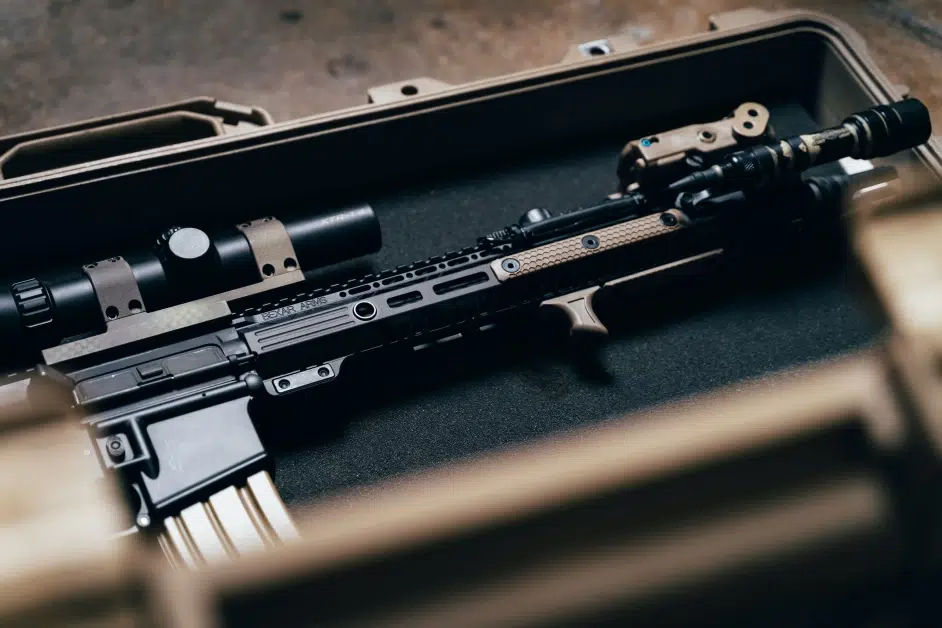
Categories:
The AR10 rifle, a robust and powerful gun, has been a staple in the world of semi-automatic rifles since its inception by Eugene Stoner in the 1950s. At the heart of this iconic weapon lies its trigger group mechanism, which is essential for its operation and firing capabilities. The trigger group is a crucial assembly within the AR10, playing a central role in translating the shooter’s intent into action.
This mechanism comprises the trigger, hammer, and various springs, working in concert to ensure that each shot is discharged reliably, safely, and accurately.
The trigger is the component the shooter physically interacts with. When the trigger is pulled, it initiates a complex sequence of mechanical interactions. At a fundamental level, the trigger works by releasing the hammer from a cocked position. The hammer, which is held under tension by the hammer spring, then rapidly strikes the firing pin. The energy transferred to the firing pin propels it forward towards the primer of the cartridge in the chamber, igniting the primer and subsequently firing the bullet.
Central to this process are the springs in the trigger group, particularly the hammer spring and the trigger spring. The hammer spring provides the necessary force to drive the hammer forward with sufficient energy to ignite the primer. Variations in the tension of this spring can affect the reliability and consistency of the firing pin strike, which is why the choice of spring is crucial in the rifle’s overall performance.
The trigger spring, on the other hand, provides the tension required for the trigger’s reset mechanism, ensuring that the trigger returns to its forward position after each shot. This allows for the next shot to be taken, making semi-automatic firing possible.
The synergy between these components—the precise release of the hammer, the controlled delivery of energy via the springs, and the reliable engagement of the firing pin—ensures that the AR10 can perform its function effectively. The design and maintenance of the trigger group are paramount, as any flaws or wear in this mechanism can lead to misfires, failures to fire, or unintended discharges.
Over time and with use, shooters may also choose to customize or upgrade these components to enhance their rifle’s performance, improving trigger response, and overall shooting experience. Ultimately, the AR10’s trigger group represents a finely tuned mechanism that underscores the rifle’s engineering excellence and operational dependability.
The AR10 trigger group is a crucial component of the gun, responsible for the precise control of the firing process. This mechanism is intricate, and ensuring its reliability is paramount for both safety and performance. At the heart of the trigger group are several essential components: the trigger, the hammer, and the springs, each playing a vital role in the operation of the gun.
The trigger is the principal interface between the shooter and the firing mechanism. It is a lever-like structure that, when pulled, initiates the sequence of events that result in the discharge of the gun. Triggers can be tuned for weight and travel distance, allowing shooters to customize the pull according to their preferences. A smooth, consistent trigger pull is essential for accurate shooting, as it helps maintain the shooter’s control and aim.
The hammer is another critical component within the AR10 trigger group. It is a pivoting, spring-loaded piece that strikes the firing pin when released by the trigger. The force and speed with which the hammer strikes the firing pin are critical, as they directly affect the reliability of the primer ignition. The hammer’s design ensures enough mass and velocity to consistently ignite the primer, setting off the ammunition in the chamber.
The hammer must be robust and durable, as it undergoes repeated stresses with each shot fired.
Springs within the AR10 trigger group fulfill multiple functions, primarily providing the necessary tension to the trigger and hammer. The trigger spring ensures the trigger returns to its forward position after being pulled. It also influences the trigger’s pull weight, contributing to the overall feel of the shooting experience. The hammer spring, on the other hand, provides the energy required for the hammer to strike the firing pin with sufficient force.
This spring is typically a coil or double-coil type, designed to withstand repeated compressions and expansions without losing tension.
These components—the trigger, hammer, and springs—work in unison to ensure the gun operates smoothly and reliably. Precision in their design and quality in their materials are essential, as any malfunction can compromise both the safety and effectiveness of the gun. Proper maintenance and occasional inspection of these components can prevent wear and tear, ensuring the AR10’s trigger group remains in optimal condition for accurate and reliable performance.
The role of the trigger in the AR-10 trigger group mechanism is fundamental to the operation of the gun. The trigger is not merely a simple lever; it is an intricate component that initiates the firing process and directly influences the gun’s performance and safety. When a shooter pulls the trigger, it sets off a sequence of mechanical events that culminates in the discharge of a round.
Understanding the role of the trigger entails a deep appreciation of its interplay with the hammer and the springs, as well as its impact on the shooter’s experience and the gun’s reliability.
At its core, the trigger serves as the interface between the shooter and the firing mechanism. When pressure is applied to the trigger, it pivots on a pin, moving rearward and disengaging the sear from the hammer. The sear is a small but critical component that holds the hammer in a cocked position. The precise machining and positioning of the sear are crucial, as they ensure a smooth release of the hammer when the trigger is pulled.
This release has to be finely tuned to balance safety with performance. If the sear engagement is too tight, the trigger pull will be heavy and less responsive, which can affect accuracy and control. Conversely, if it is too loose, it could lead to unintentional discharges, posing a severe safety risk.
Once the trigger releases the hammer, the hammer pivots forward, driven by the force of its spring. The energy stored in the compressed hammer spring translates into kinetic energy, propelling the hammer rapidly towards the firing pin, striking it with sufficient force to ignite the primer of the loaded cartridge. This ignition then ignites the gunpowder within the cartridge, creating a high-pressure gas that propels the bullet down the barrel.
The exact moment of the hammer’s release and the subsequent ignition of the primer is a critical phase that demands impeccable timing and reliability.
The design and quality of the trigger are paramount for ensuring consistent performance. A well-designed trigger provides a clean, crisp break, reducing any unnecessary movement that could affect the shooter’s aim. This precision is achieved through meticulous engineering and high-quality materials, which together ensure longevity and reliability. Moreover, the trigger pull weight—how much force is required to pull the trigger—can be tailored to suit specific applications, whether it’s for precision shooting, rapid fire, or general-purpose use.
Therefore, the trigger not only initiates the firing sequence but also significantly influences the shooter’s control, accuracy, and the overall safety of the gun.
The function of the hammer in the AR-10 trigger group mechanism is of paramount importance, playing a crucial role in the gun’s ability to discharge a round. The hammer is a robust, metallic component that pivots on its own axis within the trigger housing. It interacts closely with other elements of the trigger group, particularly the trigger itself and the springs that provide the necessary tension for its movement.
When the trigger is in its neutral position, the hammer is securely held back by the sear, a small searing surface that is part of the trigger mechanism. This position is maintained by the tension applied by the hammer spring, a tightly coiled spring that exerts forward pressure on the hammer. As the shooter applies force to the trigger, the trigger rotates on its pin, causing the sear to disengage from the hammer.
With the sear no longer holding it in place, the hammer is thrust forward by the energy stored in the hammer spring. This rapid forward motion of the hammer is pivotal in initiating the firing sequence.
Upon being released, the hammer strikes the firing pin, a thin, rod-like component housed within the bolt carrier group. The impact of the hammer on the firing pin drives it forward with considerable force, ultimately causing the firing pin to strike the primer at the base of the cartridge seated in the chamber. The primer is a small, sensitive component that, upon impact, ignites the gunpowder within the cartridge.
This ignition creates a controlled explosion that generates the high-pressure gases needed to propel the bullet down the barrel and out of the gun.
The hammer’s design and material composition are engineered to withstand substantial forces over repeated use, ensuring reliability and longevity. Moreover, its movement and interaction with the firing pin must occur with precise timing and force to ensure consistent ignition of the cartridge primer. This precision is achieved through meticulous manufacturing and assembly processes, incorporating high-quality materials that can endure the rigors of repeated firing.
As the bolt carrier group cycles back after firing a round, it re-cocks the hammer by pushing it back into its original position, where it is once again caught by the sear. This reset process prepares the gun for the next shot, contingent upon the shooter releasing the trigger and allowing the mechanism to reset fully. The hammer’s repetitive engagement in this cycle underscores its essential role in the firing mechanism of the AR-10.
The springs in the AR-10 trigger group mechanism play a crucial role in the gun’s operation, reliability, and overall performance. Understanding the function of these springs helps in appreciating how each component of the trigger group interacts to facilitate firing. In the AR-10, the primary springs involved in the trigger mechanism are the trigger spring, the hammer spring, and, in some designs, a disconnector spring.
The trigger spring is responsible for returning the trigger to its forward position after it has been pulled and released. This is imperative for semi-automatic firing, as without a properly functioning trigger spring, the trigger would remain depressed after a shot, preventing subsequent shots. The trigger spring typically wraps around the trigger pin and applies upward pressure to ensure that the trigger resets promptly and reliably.
This spring is designed to operate under the constant stress of repeated firing, maintaining tension even after extensive use.
The hammer spring is perhaps the highest tension spring within the trigger group. Its primary function is to store potential energy when the hammer is cocked, which is then released with rapid force when the trigger is pulled. This energy transfer is what drives the hammer forward to strike the firing pin, initiating the firing sequence. The hammer spring is usually a coil spring that fits around the hammer pin and anchors in place, applying downward force on the hammer.
This spring must balance durability with strength since it must provide consistent force to ensure reliable ignition of primers in various ammunition types.
In some AR-10 variants, the disconnector spring assists in temporarily holding the hammer in a cocked position after a shot is fired and before the trigger is released. This ensures that the hammer does not follow the bolt carrier group back forward, which could result in a failure to fire the next round. The disconnector spring exerts upward pressure on the disconnector, enabling it to securely engage and subsequently release the hammer when the trigger is reset.
Understanding the interaction and importance of these springs reveals why maintaining them in good condition is essential. Springs in the trigger group must be inspected regularly and replaced if they show signs of wear, loss of tension, or damage, as their failure can lead to misfires, inconsistent firing, or a completely inoperable gun. Proper spring maintenance ensures that the AR-10 continues to operate safely, efficiently, and reliably, making it a dependable tool whether for sport, hunting, or defense.
The AR-10 trigger group mechanism for firing is a crucial component that ensures the proper and safe operation of the gun. This assembly, which includes the trigger, hammer, and springs, functions as an intricate and harmonious system designed to reliably initiate a round’s discharge. The primary elements collaborate to achieve a singular goal: propelling the firing pin forward to strike the primer of a chambered round, thus engaging the firing sequence.
When a shooter applies pressure to the trigger, this action actuates the trigger’s movement on its pivot point. The trigger is typically connected to a sear that holds the hammer in a cocked position. As the trigger continues its rearward movement, it disengages the sear from the hammer. This release allows the hammer, which is under tension from the hammer spring, to rotate at high speed towards the firing pin.
It is critical to note that the geometries and tolerances in the sear and hammer interface are designed with great precision to ensure a consistent and safe release mechanism.
Upon the hammer’s release, the energy stored in the compressed hammer spring is transferred to the hammer itself. This rapid movement results in the hammer striking the back of the firing pin. The firing pin, in turn, delivers a sharp blow to the primer of the cartridge seated in the gun’s chamber. The primer ignites the gunpowder within the cartridge, causing a controlled explosion that propels the bullet down the barrel and out of the gun.
Once the cartridge has discharged, the cycling of the gun begins, typically through the force of the gas system or recoil, which automatically resets the hammer and trigger components into their starting positions. This reset process involves repositioning the hammer back into its cocked state, where it will be held by the sear, ready to be released again upon the next trigger pull.
The springs within the trigger group, particularly the disconnector spring and hammer spring, play vital roles in this resetting and holding actions.
In summary, the AR-10 trigger group mechanism exemplifies a well-engineered balance of mechanical parts designed to ensure precise, consistent, and safe firing. The seamless cooperation of the trigger, hammer, and springs ensures the gun operates effectively, delivering reliable performance with each shot.
Proper maintenance and troubleshooting of the AR-10’s trigger group mechanism can ensure reliable performance and longevity of the gun. The trigger group, which includes the trigger, hammer, and springs, is critical for the firing operation. Regularly cleaning and inspecting these components is essential to maintain optimal function.
To begin with, always ensure the gun is unloaded before performing any maintenance. Disassemble the rifle according to the manufacturer’s instructions, removing the lower receiver to access the trigger group. Once disassembled, use a soft brush or compressed air to remove any dirt, carbon buildup, or debris from the trigger, hammer, and springs. A solvent can be employed to dissolve any stubborn residues, but it is vital to ensure all solvent is thoroughly wiped away afterward to prevent any adverse effects on the metal parts.
Inspect each component for signs of wear or damage. The trigger should have smooth, consistent surfaces without nicks or deformities. The hammer must also be free of cracks and significant wear, particularly around the sear engagement surface. Examine the springs for any signs of overstretching, rust, or fatigue. If any of these parts show excessive wear or damage, replacing them with high-quality components is recommended to maintain the reliability of the trigger group.
Lubrication is another key aspect of maintenance. Apply a thin coat of a high-quality lubricant to the contact surfaces of the trigger and hammer. This helps reduce friction and wear during the firing cycle. However, avoid over-lubrication as it can attract dust and debris, potentially leading to malfunctions.
When troubleshooting issues such as light strikes, failure to reset, or inconsistent trigger pull, several factors should be considered. First, ensure the springs are installed correctly and are not weakened. Weak or damaged springs can result in insufficient force being applied, leading to poor performance. Check the engagement surfaces of the trigger and hammer; any irregularities here can cause unpredictable behavior.
Another common issue is improper assembly. Verify that all pins and components are correctly seated. Misalignment can lead to malfunctions. Lastly, ensure there is no excessive lubricant or debris in the trigger group that could impede movement.
By adhering to these maintenance practices and promptly addressing any issues, the AR-10 trigger group can continue to operate smoothly and reliably, providing a consistent and safe shooting experience. Regular maintenance not only extends the life of the components but also ensures superior performance in various conditions.
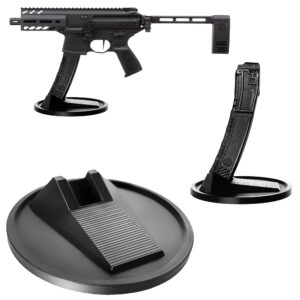
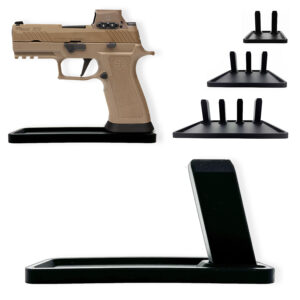
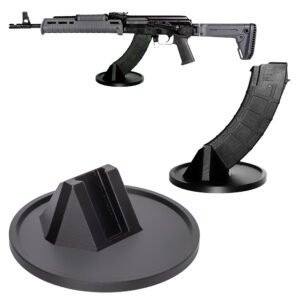
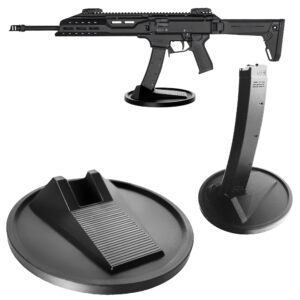




Colt
Colt M4 Carbine
Colt LE6920
Colt AR-15 A4
Daniel Defense
DDM4 V7
DDM4 V9
DDM4 V11
DDM4 ISR (Integrally Suppressed Rifle)
Smith & Wesson (S&W)
M&P15 Sport II
M&P15 Tactical
M&P15T
Bravo Company Manufacturing (BCM)
BCM Recce-16
BCM Recce-14
BCM MCMR Series
Aero Precision
M4E1 Series
AC-15
AR15 Pistol (Various Configurations)
Ruger
Ruger AR-556
Ruger SR-556
Ruger AR-556 MPR (Multi-Purpose Rifle)
Springfield Armory
Saint Victor
Saint Edge
Saint AR-15
PSA (Palmetto State Armory)
PSA PA-15
PSA AR-V
PSA Jakl (AR Pistol)
FN America
FN 15 Tactical Carbine
FN 15 Patrol
FN 15 DMR
Wilson Combat
Recon Tactical
Super Sniper
Protector Carbine
SIG Sauer
SIG M400 Tread
SIG M400 Elite
SIG M400 SDI
LWRC International
IC DI (Direct Impingement)
IC SPR
IC A5
Bushmaster Guns
XM-15 QRC
Bushmaster MOE
XM-15 Patrolman
Rock River Arms
LAR-15 Entry Tactical
LAR-15 Predator
LAR-15 Elite Comp
Stag Arms
Stag 15 Tactical
Stag 15L (Left-Handed Models)
Stag 15 Valkyrie
Noveske Rifleworks
Noveske Gen 4 N4
Noveske Space Invader (AR Pistol)
Noveske Recon
Anderson Manufacturing
AM-15 Optic Ready
AM-15 M4 Carbine
AM-15 Precision Rifle
Adams Arms
AA-15 Piston Rifle
P2 AARS (Adams Arms Rifle Series)
Black Rain Ordnance
SPEC15 Series
BRO Predator
Fallout 15
Diamondback Guns
DB15 Series
DB15CCMLB
DB15EB
Del-Ton Inc.
DTI-15
Del-Ton Echo 316H
Sierra 316M
Windham Weaponry
Windham SRC
Windham VEX-SS
Windham RMCS-4 (Caliber Conversion System)
Christensen Arms
CA-15 G2
CA-15 Recon
CA-15 Titanium Edition
Patriot Ordnance Factory (POF-USA)
Renegade Plus
P415 Edge
Revolution DI
LaRue Tactical
PredatAR
OBR (Optimized Battle Rifle)
LaRue Stealth 2.0
Battle Arms Development
Workhorse Patrol Carbine
BAD556-LW (Lightweight)
Authority Elite Rifle
Faxon Guns
Ascent AR-15
FX-19 (AR Pistol)
Streamline Ultralight Series
KE Arms
KE-15 SLT (Super Lightweight Tactical)
KE-15 Scout Carbine
Primary Weapons Systems (PWS)
MK1 MOD 2-M
MK116 PRO
MK107 (Piston AR Pistol)
ZEV Technologies
ZEV Core Elite Rifle
ZEV AR15 Billet Rifles
Franklin Armory
BFSIII AR-C1
Militia Model
F17-L (Chambered in .17 WSM)
Seekins Precision
SP15 DMR
NX15 Skeletonized Rifle
Havak Bravo
Aero Precision (Additional Models)
EPC-9 (Pistol Caliber ARs)
VG6 AR Rifles
Barrett Guns
REC7 DI
REC7 Gen II
CMMG
MK4 RCE
Resolute 300
Banshee (AR Pistol)
DPMS Panther Arms
Panther Oracle
Panther LR-308
H&K (Heckler & Koch)
HK MR556A1
HK416 (Military Variant)
Rock Island Armory (Armscor)
VR-80 Tactical AR (Shotgun AR Platform)
Troy Industries
Troy SPC-A3
Troy PAR (Pump Action AR)
Wilson Tactical
Tactical Recon AR
Protector Series
F1 Guns
FDR-15 Skeletonized Rifle
BDRx-15 Series
Juggernaut Tactical
JT-15
JT-10 Precision Rifle
AeroSurplus
Surplus AR-15 Rifles (Budget Models)
Thunder Tactical
AR-15 Basic Carbine
Tactical Builder Sets
Radical Guns
RF-15
Forged AR-Series
Dark Storm Industries
DS-15 Featureless Rifles
DS-10 Typhoon
DRD Tactical
Paratus
Aptus AR Rifles
Bear Creek Arsenal
BCA-15
AR Complete Upper Builds
Aero Survival Rifles (ASI)
ASR Tactical Series
Tactical Edge
WARFIGHTER Series
AR-15 Lightweight Rifles
Lone Star Armory
TX15 DMR
TX15 Carbine
HERA Arms
HERA H7
HERA AR-15 Lower Builds
IWI (Israeli Weapon Industries)
Zion-15
DRD Tactical
Tactical Modular Rifles
Quick-Takedown Rifles
V Seven Weapons
1776 Rifle
Hyperlite Rifle
Core Rifle Systems
Core15 Tac III
Core15 Patrol Rifle
Armalite (Original AR-15 Creator)
M15 Tactical
M15 A4 Carbine
DEF15 (Defensive Sporting Rifle Series)
PSA (Palmetto State Armory Additional Models)
PSAK-47 Hybrid (AR-AK Style Hybrid)
PSA Dagger (Pistol Caliber Configurations)
Odin Works
OTR-15
Odin Recon Rifle
Maxim Defense
MDX-508 PDX (Compact AR Pistol)
MDX-510 Rifle